10 Potential Game of Thrones Spin-offs
There is no denying
Game of Thrones is
one of the best fantasy properties out there, and since HBO adapted the novels, the series has gone beyond its genre niche and now is a pop culture phenomenon. The events of the show span two continents and focus on numerous families as they vie for power and survival. Yet, the events broadcast in the show is just a fraction of the world George R. R. Martin created.
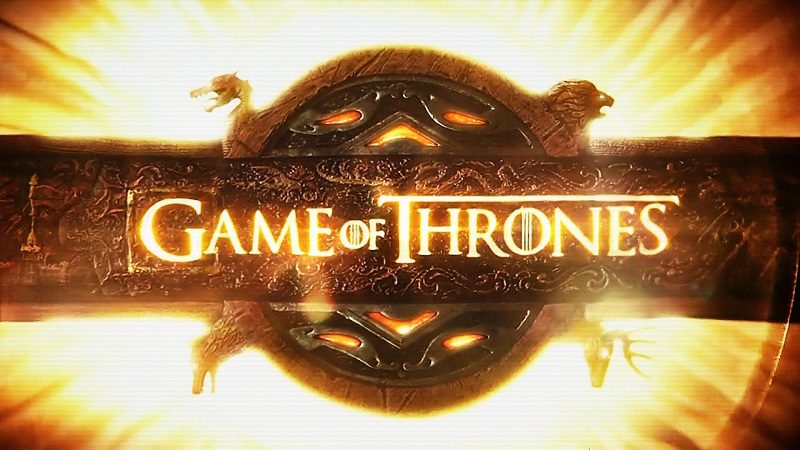
In the his novels, there is a rich lore of history, mythology, and cultures, and the world spans far beyond Westeros, the Free Cities, and Slaver's Bay. Recently, HBO announced plans to produce five spin-off scripts, with the goal of taking one of the stories to series. There is plenty of material available to expand this TV universe, so let's look at ten possible ideas that could make a great spin-off show or movie.
A special thanks needs to be given to the Youtube channel
CivilizationEx, which produces detailed videos of the history of
Game of Thrones, as well as other popular fantasy and sci-fi franchises.
10. The Adventures of Lomas Longstrider
[caption id="attachment_99488" align="aligncenter" width="800"]
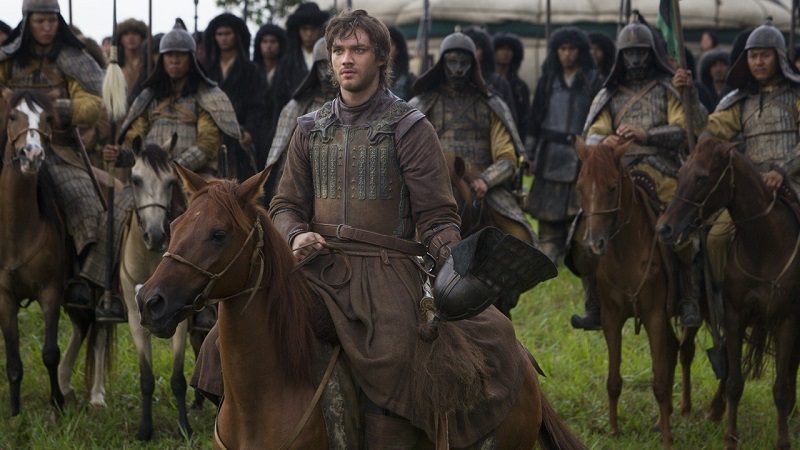
Lorenzo Richelmy (C) in a scene from Netflix's "Marco Polo." Photo Credit: Phil Bray for Netflix.
EP8[/caption]
Lomas Longstrider is the Westeros version of Marco Polo - a famed explorer who wrote two books about his adventures: 'Wonders' and 'Wonders Made by Man'. They are considered the definitive works about the East for Westerosi people. Lomas' adventures would give audiences an opportunity to see the rest of the world and the various cultures - from the Summer Isles and their more liberal attitude towards sex, the nine free cities of Essos, crossing Bone Mountains, to the exotic lands of the Far East. He studied the lands he visited and learned about places beyond - like Asshai. Journeys like this would be incredibly dangerous and few people ever survive - let alone do it twice like Longstridger did. A series about his travels could show all the various natural hazards and the dangerous warriors, bandits, and war bands he would have faced, as well as visiting many unique nations and tribes that would be alien to him- and to us.
9. The Arrival of the First Men
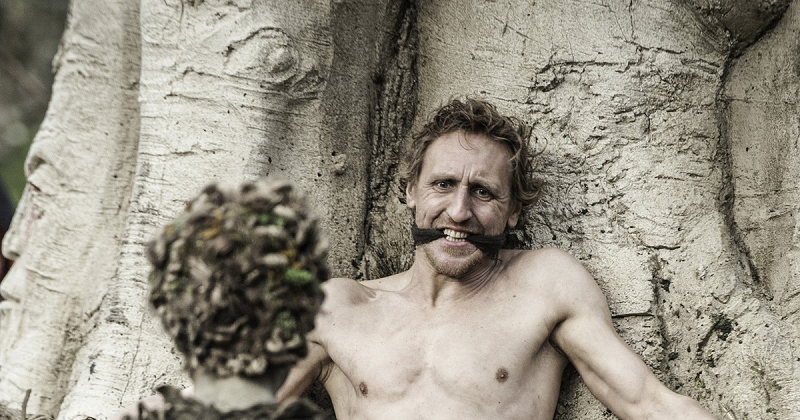
Before men arrived in Westeros the continent was inhabited by the Children of the Forest and Giants. Men only came to Westeros through the land bridge the Arm of Dorne, and when they arrived, they went to war with the Children of the Forest. Men were able to beat defeat the Children of the Forest with their advanced weapons, leading to the Children of the Forest to take extreme measures - they used their magic to break the Arm of Dorne, which created the Stepstone Islands, and they attempted to break the north of Westeros away from the rest of the continent, creating the marshland known as The Neck. The Children's most desperate, and most devastating, action was the creation of the White Walkers, which was revealed in the sixth season episode "
The Door."
After 2,000 years of conflict, the First Men and the Children made a peace pact where The Children got the forests and the First Men were given the rest of the continent.
Beyond Westeros, there were similar creatures to the Children and the Giants. In the North of Essos, there were the Ifequevron ("wood walkers" in Dothraki), a race that lived in the forests and distrusted by the Dothraki because of their mastery of magic. The Bone Mountains are literally named after the bones of stone giants, larger than the ones in Westeros that lay on the land. A look into this mystical side of the universe could be interesting.
8. The Golden Empire of Yi-Ti
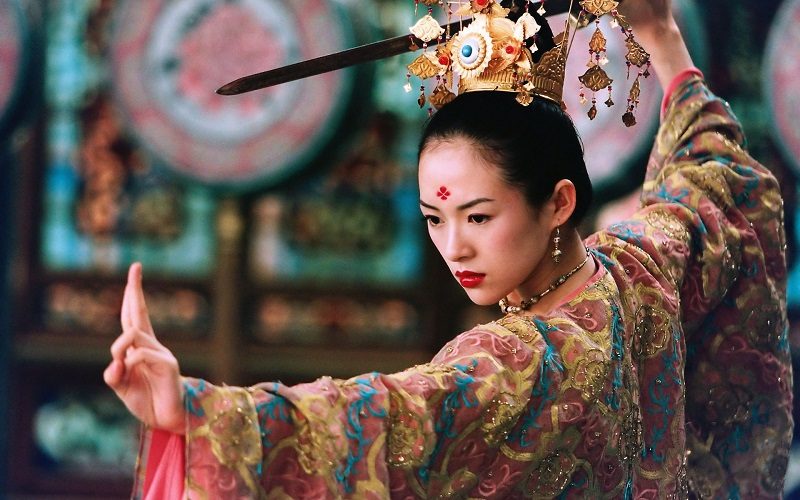
Far to East beyond the Bone Mountains lays the Golden Empire of Yi Ti - a land described as "the land of a thousand gods and a hundred princes, ruled by one god-emperor." It's an exotic place that few in Westeros have ever seen and even fewer have come back from.
Yi-Ti is
Game of Thrones' version of China - a vast land that has fractured and the Emperor's authority does not extend beyond walls of the capital Yin. During the time of the War of the Five Kings Yi-Ti has its own dynastic struggles with three contenders for the throne, as well as an outbreak of a plague.
To the north of the Empire lays the plains of the Jogos Nhai - where the nomadic people the plains rebel against the empire. The empire has tried to beat the Jogos Nhai into submission: the most infamous attempt being when the 43th Scarlett Emperor raised an army of 300,000 troops and launched a genocidal campaign, but were defeated by the legendary warrior woman Jhattar Zhai.
To the East, Yi-Ti suffers its own dark threat of wildlings and demons, and they have formed their own defense, known as the Five Forts, to keep them at bay.
A spin-off about Yi-Ti would be a lavish affair and would be the
Game of Thrones version of a wuxia film like
House of Flying Daggers and
Hero. Yi-Ti would match Westeros' political intrigue and the spin-off could help expand the franchise's appeal in East Asia.
7. The City of Asshai
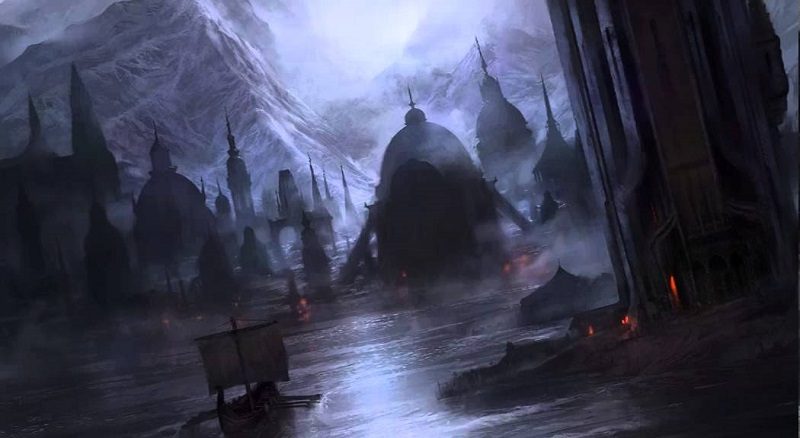
Asshai is a mysterious city in the Far East and on the edge of the Known World. It is so old that even the residents of the city do not know its origins: all they know is the city is as old as the world itself and will remain until the world's end. Asshai is the city where all dark and magical arts are taught and practiced as well as containing a vast library of books.
Asshai has a Lovecraftian atmosphere: it is the biggest city in the world, yet has a modest population: at night only a third of the buildings produce light. The city itself is made from the mysterious oily black stone - the same substance that th Kraken Throne and the base of Highgarden Tower are made of. The River Ash flows black during the day and glows green at night; the few fish that live in the river are blind and deformed and only Shadowbinders dare to eat them. No children or animals can be found in the city and the few animals that do enter the city die quickly. Because of the city's lack of food, merchants brave enough to go to Asshai can make their fortune with one visit.
When the residents do venture outside they cover their faces or travel in a curtained litter on the backs of slaves. The city lays next to the Shadow Lands - a mountainous region that is in permanent darkness where men fear to tread.
A spin-off about Asshai would be an even darker story in the
Game of Thrones (and that is really saying something considering what has happened in the books and TV show). It could work as a horror influenced show looking at people who learn these arts, which would include blood rituals and sacrifices as they hone their skill. Yet it is also a place where even a slave can rise to a position of importance - like the Red Priestess Melisandre.
6. Tales of Dunk and Egg
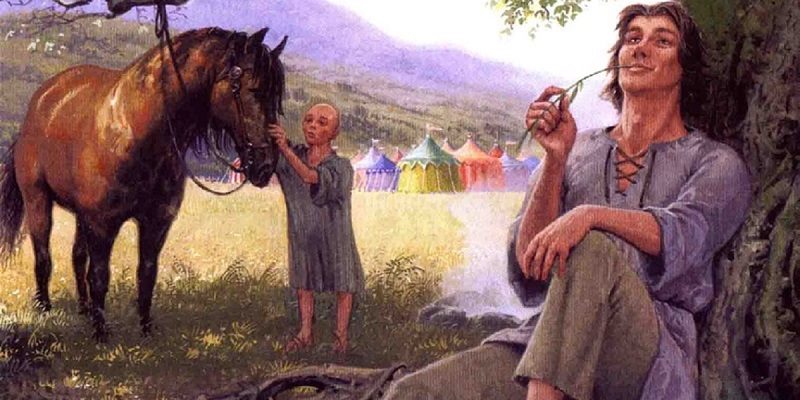 Tales of Dunk and Egg
Tales of Dunk and Egg is a series of novellas set 90 years before the events of
Game of Thrones and a logical choice to be made into a spin-off.
Tales of Dunk and Egg follows a hedge knight (a knight with no lands) - Dunk, who later becomes the legendary Duncan the Tall, and his young squire Egg, the future King Aegon V. The two form a lifelong friendship: when Aegon V became king, he made Duncan the Tall a member of the Kingsguard and Duncan gave his life to protect Aegon's children during the Tragedy at Summerhall.
Tales of Dunk and Egg span 50 years of Westerosi history, with the series originally set after the end of the First Blackfyre Rebellion, and sees Westeros in a state of political turmoil: Blackfyre challengers to the throne are present in the Free Cities; other territories in Westeros are resentful towards Dorne due to the preferential treatment they receive; the Iron Islanders raid the west coast and the continent is suffering from the Great Spring Sickness - Westeros' equivalent of the Black Death. Amidst this chaos, Dunk and Egg travel the world looking for adventures and fighting in tournaments - a young Barristan Selmy gets a knighthood at 16 years of age after defeating Duncan the Tall in a joust. They even find a dragon egg during their adventures.
5. The Andal Invasion
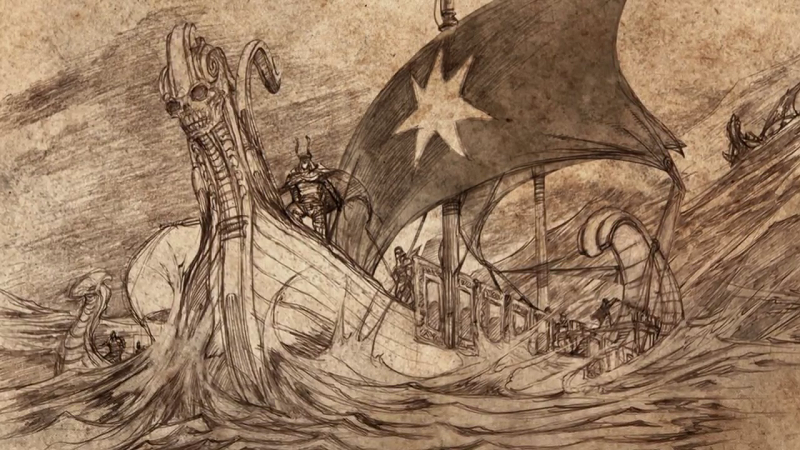
6,000 years after the truce between The Children of the Forest and the First Men, Westeros suffered from a second invasion of men, the Andals. The Andals were a race of people from Northern Essos who fled their homeland to avoid the advancing Valyrian Freehold. Like the arrival of the First Men before, the Andals launched a campaign of violence against the inhabitants. The First Men were driven North and the Andal committed genocide against the Children of the Forest - forcing the remaining few beyond The Wall. Also, like the Arrival of the First Men, the Andals were to able win with more advanced technology despite being out outnumbered.
Andal culture had a huge impact on Westeros: They were the people that brought in the code of chivalry and the Faith of the Seven (
Game of Thrones' version of Christianity). The Andals were described as a beautiful, blond people, and their genes are particularly strong in the Lannisters.
Although the Andals were technologically advanced they consolidated their position through marriages to the established ruling families and Andals settled with the First Men. Most people who live below the Neck are a mix of First Men and Andals, hence why the ruler of the Westeros is declared the King of the Andals, the Rhoyner, and the First Men.
The Andal Invasion is similar to Saxon and Viking invasions of England - people from across the North Sea who attacked and settled in England, but not so much in Scotland, Wales and Ireland (like the North in
Game of Thrones). Both the Saxons and the Vikings ended up settling and they mixed with the people who already lived in the territory.
This
Game of Thrones spin-off could end up being like
Vikings or
The Last Kingdom - looking at warriors and rulers who want to conquer and others who see the long game: knowing force alone is not enough to control the continent.
4. Aegon's Conquest
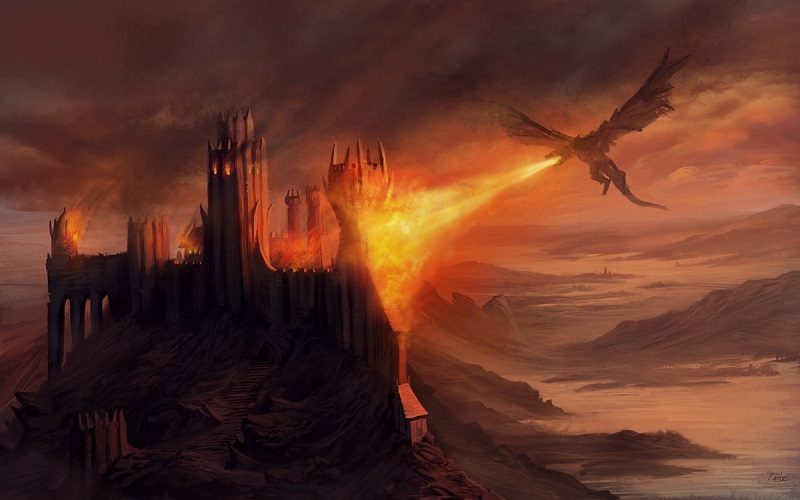
If the Andal invasion was the
Game of Thrones version of the Saxon settlement and Viking expansion into England, Aegon's Conquest is the Norman Conquest. After the Doom of Valyria and the fall of the Valyrian Freehold, the only Valyrians left were on the island of Dragonstone and their ruler, Aegon, had to choose between uniting the Free Cities or conquering Westeros. In the year 2 BC, Aegon landed in Westeros with his sister-wives (he was a Targaryen after all), and a small force of 1,600 soldiers. Despite being heavily outnumbered, Aegon was able to defeat the various rulers of Westeros because they had a not-so-secret weapon: dragons.
Over the course of two years, six of the seven kingdoms submitted to Aegon. Major events in Westeros happened during the Wars of Conquest, including the burning of Harrenhal, the largest castle on the continent, and Torrhen Stark bent the knee, knowing he couldn't beat Aegon, and became known as the King Who Knelt. Only Dorne stood against the Targaryens, and when Aegon attempted to invade, he was stopped after receiving a letter from the Martells. Although Aegon never revealed the contents of the letter, maesters and historians believed it said the Martells held Aegon's sister-wife Rhaeneys captive and they would stop torturing her if Aegon stopped the invasion.
Although Aegon was the conqueror of Westeros and a charismatic leader, he was also a shrewd political operator - knowing who to eliminate whilst sparing those who promised fealty. There would also be culture clashes, like when the Normans took over England - speaking a different language to their newly conquered people, and the Valyrian practice of incest was seen as a sin in the eyes of Old Gods and the Faith of the Seven.
3. The Dance of Dragons
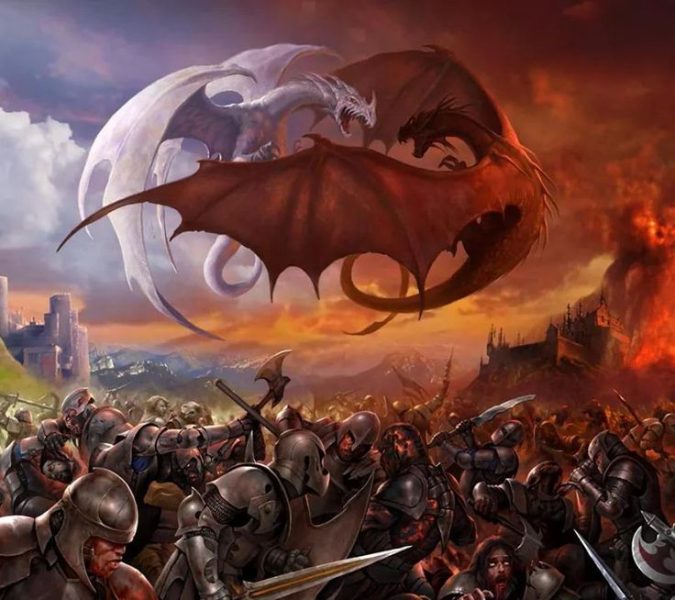
The Dance of Dragons was influenced by a period of English Medieval history known as
The Anarchy, a 19-year long civil war where the throne was contested between two cousins, King Stephen and Empress Matilda. The Dance of Dragons civil war was between two half-siblings, Queen Rhaenyra and King Aegon II. Rhaenrya was King Viserys I's chosen heir, although the law states only males could inherit the throne. As a result, Viserys' second wife, Alicent Hightower, usurped the throne for her son.
The Dance of Dragons was the most devastating civil war in Westerosi history, seeing two Targaryen factions battle each other - dragons fighting dragons where most of them die - leading to the species' eventual extinction. Although Rhaenrya's faction, the Greens, won the war, it was a Pyrrhic victory, as the seeds to the Targaryen's destruction were sowed.
The Dance of Dragons has all the political, military, and fantasy battles that fans would want to see in a
Game of Thrones spin-off, as alliances are formed and plotting
takes place within the court to eliminate rivals. The first series would be the run-up to the war with Viserys dying and Rhaenrya and Alicent jostling for position, and what follows would be the war itself.
2. Robert's Rebellion
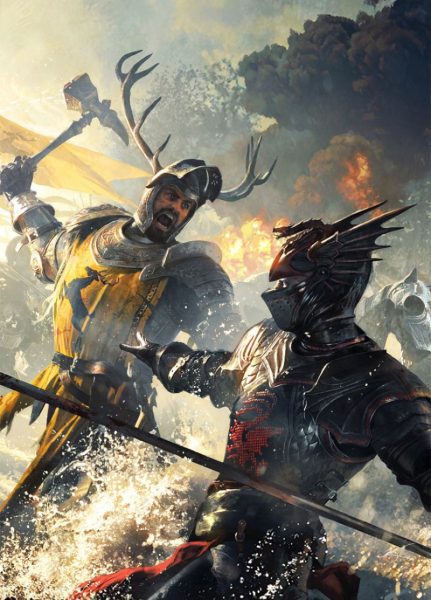
Shortly before the start of the action in the
Game of Thrones series was Robert's Rebellion against the Mad King Aerys II, which saw House Baratheon overthrow the Targaryens and saw 14 years of peace. Like the War of the Five Kings, on which the conflict is based, Robert's Rebellion was both a political and a personal conflict.
Before the war, Aerys II became incredibly paranoid and cruel. He suspected that many of his nobles were plotting to overthrow him, leading to the execution of Ned Stark's father and brother, he ordered Jon Arryn to execute his wards, Ned and Robert (an order Jon Arryn refused), became a pyrophile, locked his sister-wife in a tower, and undermined his Hand, Tywin Lannister, reversing his policies.
The war started after the tournament at Harrenhal, when his handsome son, Rhaegar, gave a flower to Lyanna Stark, an action known as the moment when all the smiles died. That one action offended to three great houses: Rhaegar was married to Ella of House Martell, and Lyanna was betrothed to Robert. The situation escalated with Rhaegar apparently abducting Lyanna (the result of that abduction was shown last season on the series), which Robert's hatred for the Targaryens: he took great pleasure in killing Rhaegar during the Battle of the Trident with his warhammer.
During the rebellion, Robert became known as a charismatic and handsome leader, and Ned showed himself to be a capable military commander: a spin-off would show different aspects of their characters and how they changed, particularly Robert.
1. The Long Night
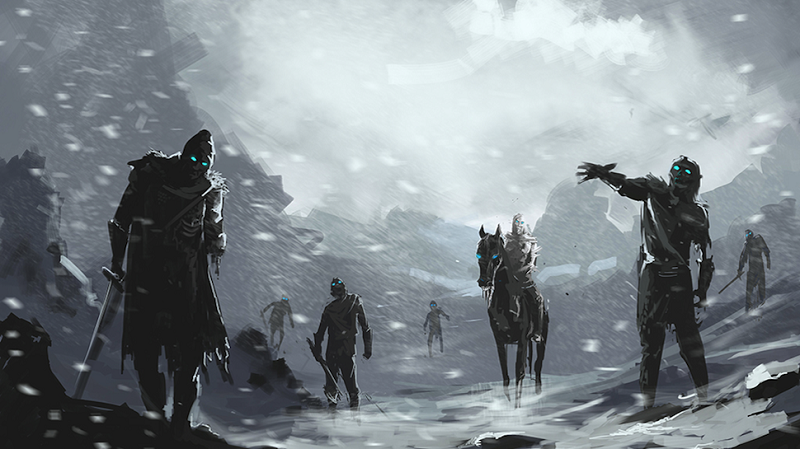
The Long Night was a legendary event in the history of the franchise that affected the known world and would be something many fans would like to see on screen. The Long Night was a long winter that lasted an entire generation, happening over 8,000 years before the events of
Game of Thrones that caused famine and violence. In Westeros, the lands of men and The Children of the Forest were attacked by mysterious creatures known as White Walkers, which pushed them all the way down to the Dawn. In Western Essos, The Rhonye, the longest river in the known world was frozen solid, and beyond the Bone Mountains, in the Great Empire of the Dawn, the regicide committed by the Bloodstone Emperor led one of their gods, the Lion of Night, to unleash his punishment by sending a demon army to attack the Empire.
Across the world, different legends formed. In Westeros, a man known as The Last Hero set out to the frozen north to ask for help from the Children of the Forest. During his adventure all his companions, horses, and dogs died, and his sword broke due to the cold. He was able to get the Children of the Forest's aid, arming men with Dragonglass, a weapon that could kill the White Walkers, and after the winning the Battle of the Dorne, they were able to push the creatures back to the Lands of Always Winter. The Long Night lead to the creation of the Night's Watch, and the Stark King Brandon the Builder built the Wall which was infused with magic from the Children of the Forest.
In the East, the legendary figure known as Azor Ahai saved the world from The White Walkers, but at a heavy cost. The legends state that Azor Ahai had to create a powerful sword: he first worked it for 30 days and nights, but the sword shattered when he tempted it in water. He then worked for 50 days and nights, and when the sword was ready, he drove it into the heart of a lion to infuse it with the beast's strength: but again it shattered. Finally, Azor Ahai labored for 100 days and nights then stabbed the sword in his beloved wife's heart, creating Lightbringer. A prophecy foretells the rebirth of Azor Ahai, destined to the save the world again from the great darkness (in the current series, both Dany and Jon have been mentioned as possible candidates for this prophecy).
The Long Night has fallen into the annals of time and even George R. R. Martin describes the event as a Westerosi equivalent Biblical stories like Noah and the Flood. Biblical would be a great way to describe The Long Night, an apocalypse level event that drove humanity to the edge and due to the fact that history and myth have merged together it would give any showrunner and writer room to create their own story.
 In the his novels, there is a rich lore of history, mythology, and cultures, and the world spans far beyond Westeros, the Free Cities, and Slaver's Bay. Recently, HBO announced plans to produce five spin-off scripts, with the goal of taking one of the stories to series. There is plenty of material available to expand this TV universe, so let's look at ten possible ideas that could make a great spin-off show or movie.
A special thanks needs to be given to the Youtube channel CivilizationEx, which produces detailed videos of the history of Game of Thrones, as well as other popular fantasy and sci-fi franchises.
10. The Adventures of Lomas Longstrider
[caption id="attachment_99488" align="aligncenter" width="800"]
In the his novels, there is a rich lore of history, mythology, and cultures, and the world spans far beyond Westeros, the Free Cities, and Slaver's Bay. Recently, HBO announced plans to produce five spin-off scripts, with the goal of taking one of the stories to series. There is plenty of material available to expand this TV universe, so let's look at ten possible ideas that could make a great spin-off show or movie.
A special thanks needs to be given to the Youtube channel CivilizationEx, which produces detailed videos of the history of Game of Thrones, as well as other popular fantasy and sci-fi franchises.
10. The Adventures of Lomas Longstrider
[caption id="attachment_99488" align="aligncenter" width="800"] Lorenzo Richelmy (C) in a scene from Netflix's "Marco Polo." Photo Credit: Phil Bray for Netflix.
Lorenzo Richelmy (C) in a scene from Netflix's "Marco Polo." Photo Credit: Phil Bray for Netflix. Before men arrived in Westeros the continent was inhabited by the Children of the Forest and Giants. Men only came to Westeros through the land bridge the Arm of Dorne, and when they arrived, they went to war with the Children of the Forest. Men were able to beat defeat the Children of the Forest with their advanced weapons, leading to the Children of the Forest to take extreme measures - they used their magic to break the Arm of Dorne, which created the Stepstone Islands, and they attempted to break the north of Westeros away from the rest of the continent, creating the marshland known as The Neck. The Children's most desperate, and most devastating, action was the creation of the White Walkers, which was revealed in the sixth season episode "The Door."
After 2,000 years of conflict, the First Men and the Children made a peace pact where The Children got the forests and the First Men were given the rest of the continent.
Beyond Westeros, there were similar creatures to the Children and the Giants. In the North of Essos, there were the Ifequevron ("wood walkers" in Dothraki), a race that lived in the forests and distrusted by the Dothraki because of their mastery of magic. The Bone Mountains are literally named after the bones of stone giants, larger than the ones in Westeros that lay on the land. A look into this mystical side of the universe could be interesting.
8. The Golden Empire of Yi-Ti
Before men arrived in Westeros the continent was inhabited by the Children of the Forest and Giants. Men only came to Westeros through the land bridge the Arm of Dorne, and when they arrived, they went to war with the Children of the Forest. Men were able to beat defeat the Children of the Forest with their advanced weapons, leading to the Children of the Forest to take extreme measures - they used their magic to break the Arm of Dorne, which created the Stepstone Islands, and they attempted to break the north of Westeros away from the rest of the continent, creating the marshland known as The Neck. The Children's most desperate, and most devastating, action was the creation of the White Walkers, which was revealed in the sixth season episode "The Door."
After 2,000 years of conflict, the First Men and the Children made a peace pact where The Children got the forests and the First Men were given the rest of the continent.
Beyond Westeros, there were similar creatures to the Children and the Giants. In the North of Essos, there were the Ifequevron ("wood walkers" in Dothraki), a race that lived in the forests and distrusted by the Dothraki because of their mastery of magic. The Bone Mountains are literally named after the bones of stone giants, larger than the ones in Westeros that lay on the land. A look into this mystical side of the universe could be interesting.
8. The Golden Empire of Yi-Ti
 Far to East beyond the Bone Mountains lays the Golden Empire of Yi Ti - a land described as "the land of a thousand gods and a hundred princes, ruled by one god-emperor." It's an exotic place that few in Westeros have ever seen and even fewer have come back from.
Yi-Ti is Game of Thrones' version of China - a vast land that has fractured and the Emperor's authority does not extend beyond walls of the capital Yin. During the time of the War of the Five Kings Yi-Ti has its own dynastic struggles with three contenders for the throne, as well as an outbreak of a plague.
To the north of the Empire lays the plains of the Jogos Nhai - where the nomadic people the plains rebel against the empire. The empire has tried to beat the Jogos Nhai into submission: the most infamous attempt being when the 43th Scarlett Emperor raised an army of 300,000 troops and launched a genocidal campaign, but were defeated by the legendary warrior woman Jhattar Zhai.
To the East, Yi-Ti suffers its own dark threat of wildlings and demons, and they have formed their own defense, known as the Five Forts, to keep them at bay.
A spin-off about Yi-Ti would be a lavish affair and would be the Game of Thrones version of a wuxia film like House of Flying Daggers and Hero. Yi-Ti would match Westeros' political intrigue and the spin-off could help expand the franchise's appeal in East Asia.
7. The City of Asshai
Far to East beyond the Bone Mountains lays the Golden Empire of Yi Ti - a land described as "the land of a thousand gods and a hundred princes, ruled by one god-emperor." It's an exotic place that few in Westeros have ever seen and even fewer have come back from.
Yi-Ti is Game of Thrones' version of China - a vast land that has fractured and the Emperor's authority does not extend beyond walls of the capital Yin. During the time of the War of the Five Kings Yi-Ti has its own dynastic struggles with three contenders for the throne, as well as an outbreak of a plague.
To the north of the Empire lays the plains of the Jogos Nhai - where the nomadic people the plains rebel against the empire. The empire has tried to beat the Jogos Nhai into submission: the most infamous attempt being when the 43th Scarlett Emperor raised an army of 300,000 troops and launched a genocidal campaign, but were defeated by the legendary warrior woman Jhattar Zhai.
To the East, Yi-Ti suffers its own dark threat of wildlings and demons, and they have formed their own defense, known as the Five Forts, to keep them at bay.
A spin-off about Yi-Ti would be a lavish affair and would be the Game of Thrones version of a wuxia film like House of Flying Daggers and Hero. Yi-Ti would match Westeros' political intrigue and the spin-off could help expand the franchise's appeal in East Asia.
7. The City of Asshai
 Asshai is a mysterious city in the Far East and on the edge of the Known World. It is so old that even the residents of the city do not know its origins: all they know is the city is as old as the world itself and will remain until the world's end. Asshai is the city where all dark and magical arts are taught and practiced as well as containing a vast library of books.
Asshai has a Lovecraftian atmosphere: it is the biggest city in the world, yet has a modest population: at night only a third of the buildings produce light. The city itself is made from the mysterious oily black stone - the same substance that th Kraken Throne and the base of Highgarden Tower are made of. The River Ash flows black during the day and glows green at night; the few fish that live in the river are blind and deformed and only Shadowbinders dare to eat them. No children or animals can be found in the city and the few animals that do enter the city die quickly. Because of the city's lack of food, merchants brave enough to go to Asshai can make their fortune with one visit.
When the residents do venture outside they cover their faces or travel in a curtained litter on the backs of slaves. The city lays next to the Shadow Lands - a mountainous region that is in permanent darkness where men fear to tread.
A spin-off about Asshai would be an even darker story in the Game of Thrones (and that is really saying something considering what has happened in the books and TV show). It could work as a horror influenced show looking at people who learn these arts, which would include blood rituals and sacrifices as they hone their skill. Yet it is also a place where even a slave can rise to a position of importance - like the Red Priestess Melisandre.
6. Tales of Dunk and Egg
Asshai is a mysterious city in the Far East and on the edge of the Known World. It is so old that even the residents of the city do not know its origins: all they know is the city is as old as the world itself and will remain until the world's end. Asshai is the city where all dark and magical arts are taught and practiced as well as containing a vast library of books.
Asshai has a Lovecraftian atmosphere: it is the biggest city in the world, yet has a modest population: at night only a third of the buildings produce light. The city itself is made from the mysterious oily black stone - the same substance that th Kraken Throne and the base of Highgarden Tower are made of. The River Ash flows black during the day and glows green at night; the few fish that live in the river are blind and deformed and only Shadowbinders dare to eat them. No children or animals can be found in the city and the few animals that do enter the city die quickly. Because of the city's lack of food, merchants brave enough to go to Asshai can make their fortune with one visit.
When the residents do venture outside they cover their faces or travel in a curtained litter on the backs of slaves. The city lays next to the Shadow Lands - a mountainous region that is in permanent darkness where men fear to tread.
A spin-off about Asshai would be an even darker story in the Game of Thrones (and that is really saying something considering what has happened in the books and TV show). It could work as a horror influenced show looking at people who learn these arts, which would include blood rituals and sacrifices as they hone their skill. Yet it is also a place where even a slave can rise to a position of importance - like the Red Priestess Melisandre.
6. Tales of Dunk and Egg
 Tales of Dunk and Egg is a series of novellas set 90 years before the events of Game of Thrones and a logical choice to be made into a spin-off. Tales of Dunk and Egg follows a hedge knight (a knight with no lands) - Dunk, who later becomes the legendary Duncan the Tall, and his young squire Egg, the future King Aegon V. The two form a lifelong friendship: when Aegon V became king, he made Duncan the Tall a member of the Kingsguard and Duncan gave his life to protect Aegon's children during the Tragedy at Summerhall.
Tales of Dunk and Egg span 50 years of Westerosi history, with the series originally set after the end of the First Blackfyre Rebellion, and sees Westeros in a state of political turmoil: Blackfyre challengers to the throne are present in the Free Cities; other territories in Westeros are resentful towards Dorne due to the preferential treatment they receive; the Iron Islanders raid the west coast and the continent is suffering from the Great Spring Sickness - Westeros' equivalent of the Black Death. Amidst this chaos, Dunk and Egg travel the world looking for adventures and fighting in tournaments - a young Barristan Selmy gets a knighthood at 16 years of age after defeating Duncan the Tall in a joust. They even find a dragon egg during their adventures.
5. The Andal Invasion
Tales of Dunk and Egg is a series of novellas set 90 years before the events of Game of Thrones and a logical choice to be made into a spin-off. Tales of Dunk and Egg follows a hedge knight (a knight with no lands) - Dunk, who later becomes the legendary Duncan the Tall, and his young squire Egg, the future King Aegon V. The two form a lifelong friendship: when Aegon V became king, he made Duncan the Tall a member of the Kingsguard and Duncan gave his life to protect Aegon's children during the Tragedy at Summerhall.
Tales of Dunk and Egg span 50 years of Westerosi history, with the series originally set after the end of the First Blackfyre Rebellion, and sees Westeros in a state of political turmoil: Blackfyre challengers to the throne are present in the Free Cities; other territories in Westeros are resentful towards Dorne due to the preferential treatment they receive; the Iron Islanders raid the west coast and the continent is suffering from the Great Spring Sickness - Westeros' equivalent of the Black Death. Amidst this chaos, Dunk and Egg travel the world looking for adventures and fighting in tournaments - a young Barristan Selmy gets a knighthood at 16 years of age after defeating Duncan the Tall in a joust. They even find a dragon egg during their adventures.
5. The Andal Invasion
 6,000 years after the truce between The Children of the Forest and the First Men, Westeros suffered from a second invasion of men, the Andals. The Andals were a race of people from Northern Essos who fled their homeland to avoid the advancing Valyrian Freehold. Like the arrival of the First Men before, the Andals launched a campaign of violence against the inhabitants. The First Men were driven North and the Andal committed genocide against the Children of the Forest - forcing the remaining few beyond The Wall. Also, like the Arrival of the First Men, the Andals were to able win with more advanced technology despite being out outnumbered.
Andal culture had a huge impact on Westeros: They were the people that brought in the code of chivalry and the Faith of the Seven (Game of Thrones' version of Christianity). The Andals were described as a beautiful, blond people, and their genes are particularly strong in the Lannisters.
Although the Andals were technologically advanced they consolidated their position through marriages to the established ruling families and Andals settled with the First Men. Most people who live below the Neck are a mix of First Men and Andals, hence why the ruler of the Westeros is declared the King of the Andals, the Rhoyner, and the First Men.
The Andal Invasion is similar to Saxon and Viking invasions of England - people from across the North Sea who attacked and settled in England, but not so much in Scotland, Wales and Ireland (like the North in Game of Thrones). Both the Saxons and the Vikings ended up settling and they mixed with the people who already lived in the territory.
This Game of Thrones spin-off could end up being like Vikings or The Last Kingdom - looking at warriors and rulers who want to conquer and others who see the long game: knowing force alone is not enough to control the continent.
4. Aegon's Conquest
6,000 years after the truce between The Children of the Forest and the First Men, Westeros suffered from a second invasion of men, the Andals. The Andals were a race of people from Northern Essos who fled their homeland to avoid the advancing Valyrian Freehold. Like the arrival of the First Men before, the Andals launched a campaign of violence against the inhabitants. The First Men were driven North and the Andal committed genocide against the Children of the Forest - forcing the remaining few beyond The Wall. Also, like the Arrival of the First Men, the Andals were to able win with more advanced technology despite being out outnumbered.
Andal culture had a huge impact on Westeros: They were the people that brought in the code of chivalry and the Faith of the Seven (Game of Thrones' version of Christianity). The Andals were described as a beautiful, blond people, and their genes are particularly strong in the Lannisters.
Although the Andals were technologically advanced they consolidated their position through marriages to the established ruling families and Andals settled with the First Men. Most people who live below the Neck are a mix of First Men and Andals, hence why the ruler of the Westeros is declared the King of the Andals, the Rhoyner, and the First Men.
The Andal Invasion is similar to Saxon and Viking invasions of England - people from across the North Sea who attacked and settled in England, but not so much in Scotland, Wales and Ireland (like the North in Game of Thrones). Both the Saxons and the Vikings ended up settling and they mixed with the people who already lived in the territory.
This Game of Thrones spin-off could end up being like Vikings or The Last Kingdom - looking at warriors and rulers who want to conquer and others who see the long game: knowing force alone is not enough to control the continent.
4. Aegon's Conquest
 If the Andal invasion was the Game of Thrones version of the Saxon settlement and Viking expansion into England, Aegon's Conquest is the Norman Conquest. After the Doom of Valyria and the fall of the Valyrian Freehold, the only Valyrians left were on the island of Dragonstone and their ruler, Aegon, had to choose between uniting the Free Cities or conquering Westeros. In the year 2 BC, Aegon landed in Westeros with his sister-wives (he was a Targaryen after all), and a small force of 1,600 soldiers. Despite being heavily outnumbered, Aegon was able to defeat the various rulers of Westeros because they had a not-so-secret weapon: dragons.
Over the course of two years, six of the seven kingdoms submitted to Aegon. Major events in Westeros happened during the Wars of Conquest, including the burning of Harrenhal, the largest castle on the continent, and Torrhen Stark bent the knee, knowing he couldn't beat Aegon, and became known as the King Who Knelt. Only Dorne stood against the Targaryens, and when Aegon attempted to invade, he was stopped after receiving a letter from the Martells. Although Aegon never revealed the contents of the letter, maesters and historians believed it said the Martells held Aegon's sister-wife Rhaeneys captive and they would stop torturing her if Aegon stopped the invasion.
Although Aegon was the conqueror of Westeros and a charismatic leader, he was also a shrewd political operator - knowing who to eliminate whilst sparing those who promised fealty. There would also be culture clashes, like when the Normans took over England - speaking a different language to their newly conquered people, and the Valyrian practice of incest was seen as a sin in the eyes of Old Gods and the Faith of the Seven.
3. The Dance of Dragons
If the Andal invasion was the Game of Thrones version of the Saxon settlement and Viking expansion into England, Aegon's Conquest is the Norman Conquest. After the Doom of Valyria and the fall of the Valyrian Freehold, the only Valyrians left were on the island of Dragonstone and their ruler, Aegon, had to choose between uniting the Free Cities or conquering Westeros. In the year 2 BC, Aegon landed in Westeros with his sister-wives (he was a Targaryen after all), and a small force of 1,600 soldiers. Despite being heavily outnumbered, Aegon was able to defeat the various rulers of Westeros because they had a not-so-secret weapon: dragons.
Over the course of two years, six of the seven kingdoms submitted to Aegon. Major events in Westeros happened during the Wars of Conquest, including the burning of Harrenhal, the largest castle on the continent, and Torrhen Stark bent the knee, knowing he couldn't beat Aegon, and became known as the King Who Knelt. Only Dorne stood against the Targaryens, and when Aegon attempted to invade, he was stopped after receiving a letter from the Martells. Although Aegon never revealed the contents of the letter, maesters and historians believed it said the Martells held Aegon's sister-wife Rhaeneys captive and they would stop torturing her if Aegon stopped the invasion.
Although Aegon was the conqueror of Westeros and a charismatic leader, he was also a shrewd political operator - knowing who to eliminate whilst sparing those who promised fealty. There would also be culture clashes, like when the Normans took over England - speaking a different language to their newly conquered people, and the Valyrian practice of incest was seen as a sin in the eyes of Old Gods and the Faith of the Seven.
3. The Dance of Dragons
 The Dance of Dragons was influenced by a period of English Medieval history known as The Anarchy, a 19-year long civil war where the throne was contested between two cousins, King Stephen and Empress Matilda. The Dance of Dragons civil war was between two half-siblings, Queen Rhaenyra and King Aegon II. Rhaenrya was King Viserys I's chosen heir, although the law states only males could inherit the throne. As a result, Viserys' second wife, Alicent Hightower, usurped the throne for her son.
The Dance of Dragons was the most devastating civil war in Westerosi history, seeing two Targaryen factions battle each other - dragons fighting dragons where most of them die - leading to the species' eventual extinction. Although Rhaenrya's faction, the Greens, won the war, it was a Pyrrhic victory, as the seeds to the Targaryen's destruction were sowed.
The Dance of Dragons has all the political, military, and fantasy battles that fans would want to see in a Game of Thrones spin-off, as alliances are formed and plotting takes place within the court to eliminate rivals. The first series would be the run-up to the war with Viserys dying and Rhaenrya and Alicent jostling for position, and what follows would be the war itself.
2. Robert's Rebellion
The Dance of Dragons was influenced by a period of English Medieval history known as The Anarchy, a 19-year long civil war where the throne was contested between two cousins, King Stephen and Empress Matilda. The Dance of Dragons civil war was between two half-siblings, Queen Rhaenyra and King Aegon II. Rhaenrya was King Viserys I's chosen heir, although the law states only males could inherit the throne. As a result, Viserys' second wife, Alicent Hightower, usurped the throne for her son.
The Dance of Dragons was the most devastating civil war in Westerosi history, seeing two Targaryen factions battle each other - dragons fighting dragons where most of them die - leading to the species' eventual extinction. Although Rhaenrya's faction, the Greens, won the war, it was a Pyrrhic victory, as the seeds to the Targaryen's destruction were sowed.
The Dance of Dragons has all the political, military, and fantasy battles that fans would want to see in a Game of Thrones spin-off, as alliances are formed and plotting takes place within the court to eliminate rivals. The first series would be the run-up to the war with Viserys dying and Rhaenrya and Alicent jostling for position, and what follows would be the war itself.
2. Robert's Rebellion
 Shortly before the start of the action in the Game of Thrones series was Robert's Rebellion against the Mad King Aerys II, which saw House Baratheon overthrow the Targaryens and saw 14 years of peace. Like the War of the Five Kings, on which the conflict is based, Robert's Rebellion was both a political and a personal conflict.
Before the war, Aerys II became incredibly paranoid and cruel. He suspected that many of his nobles were plotting to overthrow him, leading to the execution of Ned Stark's father and brother, he ordered Jon Arryn to execute his wards, Ned and Robert (an order Jon Arryn refused), became a pyrophile, locked his sister-wife in a tower, and undermined his Hand, Tywin Lannister, reversing his policies.
The war started after the tournament at Harrenhal, when his handsome son, Rhaegar, gave a flower to Lyanna Stark, an action known as the moment when all the smiles died. That one action offended to three great houses: Rhaegar was married to Ella of House Martell, and Lyanna was betrothed to Robert. The situation escalated with Rhaegar apparently abducting Lyanna (the result of that abduction was shown last season on the series), which Robert's hatred for the Targaryens: he took great pleasure in killing Rhaegar during the Battle of the Trident with his warhammer.
During the rebellion, Robert became known as a charismatic and handsome leader, and Ned showed himself to be a capable military commander: a spin-off would show different aspects of their characters and how they changed, particularly Robert.
1. The Long Night
Shortly before the start of the action in the Game of Thrones series was Robert's Rebellion against the Mad King Aerys II, which saw House Baratheon overthrow the Targaryens and saw 14 years of peace. Like the War of the Five Kings, on which the conflict is based, Robert's Rebellion was both a political and a personal conflict.
Before the war, Aerys II became incredibly paranoid and cruel. He suspected that many of his nobles were plotting to overthrow him, leading to the execution of Ned Stark's father and brother, he ordered Jon Arryn to execute his wards, Ned and Robert (an order Jon Arryn refused), became a pyrophile, locked his sister-wife in a tower, and undermined his Hand, Tywin Lannister, reversing his policies.
The war started after the tournament at Harrenhal, when his handsome son, Rhaegar, gave a flower to Lyanna Stark, an action known as the moment when all the smiles died. That one action offended to three great houses: Rhaegar was married to Ella of House Martell, and Lyanna was betrothed to Robert. The situation escalated with Rhaegar apparently abducting Lyanna (the result of that abduction was shown last season on the series), which Robert's hatred for the Targaryens: he took great pleasure in killing Rhaegar during the Battle of the Trident with his warhammer.
During the rebellion, Robert became known as a charismatic and handsome leader, and Ned showed himself to be a capable military commander: a spin-off would show different aspects of their characters and how they changed, particularly Robert.
1. The Long Night
 The Long Night was a legendary event in the history of the franchise that affected the known world and would be something many fans would like to see on screen. The Long Night was a long winter that lasted an entire generation, happening over 8,000 years before the events of Game of Thrones that caused famine and violence. In Westeros, the lands of men and The Children of the Forest were attacked by mysterious creatures known as White Walkers, which pushed them all the way down to the Dawn. In Western Essos, The Rhonye, the longest river in the known world was frozen solid, and beyond the Bone Mountains, in the Great Empire of the Dawn, the regicide committed by the Bloodstone Emperor led one of their gods, the Lion of Night, to unleash his punishment by sending a demon army to attack the Empire.
Across the world, different legends formed. In Westeros, a man known as The Last Hero set out to the frozen north to ask for help from the Children of the Forest. During his adventure all his companions, horses, and dogs died, and his sword broke due to the cold. He was able to get the Children of the Forest's aid, arming men with Dragonglass, a weapon that could kill the White Walkers, and after the winning the Battle of the Dorne, they were able to push the creatures back to the Lands of Always Winter. The Long Night lead to the creation of the Night's Watch, and the Stark King Brandon the Builder built the Wall which was infused with magic from the Children of the Forest.
In the East, the legendary figure known as Azor Ahai saved the world from The White Walkers, but at a heavy cost. The legends state that Azor Ahai had to create a powerful sword: he first worked it for 30 days and nights, but the sword shattered when he tempted it in water. He then worked for 50 days and nights, and when the sword was ready, he drove it into the heart of a lion to infuse it with the beast's strength: but again it shattered. Finally, Azor Ahai labored for 100 days and nights then stabbed the sword in his beloved wife's heart, creating Lightbringer. A prophecy foretells the rebirth of Azor Ahai, destined to the save the world again from the great darkness (in the current series, both Dany and Jon have been mentioned as possible candidates for this prophecy).
The Long Night has fallen into the annals of time and even George R. R. Martin describes the event as a Westerosi equivalent Biblical stories like Noah and the Flood. Biblical would be a great way to describe The Long Night, an apocalypse level event that drove humanity to the edge and due to the fact that history and myth have merged together it would give any showrunner and writer room to create their own story.
The Long Night was a legendary event in the history of the franchise that affected the known world and would be something many fans would like to see on screen. The Long Night was a long winter that lasted an entire generation, happening over 8,000 years before the events of Game of Thrones that caused famine and violence. In Westeros, the lands of men and The Children of the Forest were attacked by mysterious creatures known as White Walkers, which pushed them all the way down to the Dawn. In Western Essos, The Rhonye, the longest river in the known world was frozen solid, and beyond the Bone Mountains, in the Great Empire of the Dawn, the regicide committed by the Bloodstone Emperor led one of their gods, the Lion of Night, to unleash his punishment by sending a demon army to attack the Empire.
Across the world, different legends formed. In Westeros, a man known as The Last Hero set out to the frozen north to ask for help from the Children of the Forest. During his adventure all his companions, horses, and dogs died, and his sword broke due to the cold. He was able to get the Children of the Forest's aid, arming men with Dragonglass, a weapon that could kill the White Walkers, and after the winning the Battle of the Dorne, they were able to push the creatures back to the Lands of Always Winter. The Long Night lead to the creation of the Night's Watch, and the Stark King Brandon the Builder built the Wall which was infused with magic from the Children of the Forest.
In the East, the legendary figure known as Azor Ahai saved the world from The White Walkers, but at a heavy cost. The legends state that Azor Ahai had to create a powerful sword: he first worked it for 30 days and nights, but the sword shattered when he tempted it in water. He then worked for 50 days and nights, and when the sword was ready, he drove it into the heart of a lion to infuse it with the beast's strength: but again it shattered. Finally, Azor Ahai labored for 100 days and nights then stabbed the sword in his beloved wife's heart, creating Lightbringer. A prophecy foretells the rebirth of Azor Ahai, destined to the save the world again from the great darkness (in the current series, both Dany and Jon have been mentioned as possible candidates for this prophecy).
The Long Night has fallen into the annals of time and even George R. R. Martin describes the event as a Westerosi equivalent Biblical stories like Noah and the Flood. Biblical would be a great way to describe The Long Night, an apocalypse level event that drove humanity to the edge and due to the fact that history and myth have merged together it would give any showrunner and writer room to create their own story.